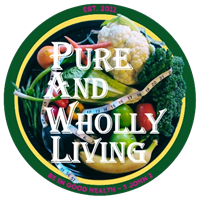Many see “hormone disruptors” and think that they only matter to “women of a certain age.” Nothing could be further from the truth.
In fact, eight glands in the endocrine system produce and release hormones that regulate everything from metabolism and growth and development, tissue function, and sleep to reproduction, sexual function, and mood, for all humans–from birth to death. Almost every cell in the body is affected by the endocrine system. A recent report from the Environmental Working Group states, “There is no end to the tricks that endocrine disruptors can play on our bodies–increasing production of certain hormones, decreasing production of others, imitating hormones, turning one hormone into another, interfering with hormone signaling, telling cells to die prematurely, competing with essential nutrients, binding to essential hormones, and accumulating in organs that produce hormones.”
Therefore, chemicals that disrupt our hormones can upset our entire systems–an issue recently highlighted by a joint report released last march by The United Nations and World Health Organization stating that, “Endocrine Disruptors (EDC’s) are a global threat to fertility and the environment.”
Keeping in mind that a good percentage of what we inhale and absorb can reach the bloodstream and consequently our endocrine system, I advise avoiding the following endocrine disruptors to reduce your body’s burden:
1. Phthalates (THAL-ates)–legally hidden in trade-secret ingredient “fragrance” or “parfum.” More than 75 percent of all products with the ingredient fragrance are tested to contain phthalates, which comes as no surprise, as phthalates are used to extend the life and reach of the secret synthetic scent. Studies have linked phthalates to diabetes, obesity, lower sperm count, birth defects in male reproductive system, early puberty, breast cancer, demasculinization of males, thyroid irregularities, autism and ADHD. AVOID: any product inhaled or absorbed with ingredients listed as “fragrance” or “parfum.”
2. Parabens–known to disrupt hormone function, an effect linked to increased risk of breast cancer and reproductive toxicity. Parabens mimic estrogen by binding to estrogen receptors on cells. They also increase the expression of genes usually regulated by estradiol (a natural form of estrogen); these genes cause human breast cancer cells to grow and multiply in cellular studies, says the Campaign for Safe Cosmetics. In addition, parabens are linked to cancer, reproductive toxicity, immunotoxicity, neurotoxicity, and skin irritation.
AVOID: methyl-, ethyl-, propyl-, isopropyl-, and all other parabens.
3. Chemical sunscreen filters–including oxybenzone, avobenzone, octisalate, octocrylene, homosalate, and octinoxate. Over the past decade dozens of studies have examined the potential health hazards of these sunscreen chemicals, including possible skin irritation or allergy, hormone disruption, and skin damage that occurs when sunlight acts on sunscreen chemicals, according to the Environmental Working Group. AVOID: above chemicals, and look for “NON-nanoparticle” zinc oxide-based sunscreens, without other added harmful chemicals.
4. Triclosan–an antimicrobial chemical, registered with the government as a pesticide. Triclosan has been linked to antibiotic resistance and is a known hormone disruptor that has been shown to alter male and female sex hormones in animal studies, which could lead to problems like early onset puberty, reduced fertility, and cancer. Triclosan accumulates in the environment, contaminating surface and ground water, and it survives the wastewater treatment process and persists in “toxic sludge” that is sold to local farmers as “natural fertilizer.” AVOID: triclosan and triclocarban
5. Perfluorinated chemicals (PFCs)–fluorine-containing chemicals with unique properties to make materials stain and stick resistant. Found in grease-resistant food packaging, nonstick cookware, and personal care products like shampoo, dental floss, nail polish, and denture cleaners. AVOID: teflon, “fluoro” or “perfluoro” ingredients.
6. Glycol ethers–solvents derived from fuel, found in cleaning solutions and personal care products, as well as paints, inks, and degreasers. The European Union says that some of these chemicals “may damage fertility or the unborn child.” Children who were exposed to glycol ethers from paint in their bedrooms had substantially more asthma and allergies. AVOID: In personal care products–propylene glycol, ethanol, and other glycols. In cleaning products–2-butoxyethanol and methoxydiglycol.
Yes, the best solution is better regulation to keep harmful chemicals from coming to the market, while removing those already there that we know or suspect to be harmful. However, having been to lobby Congress twice now for the Safe Cosmetics and Personal Care Act, and having heard firsthand the political roadblocks that arise out of party affiliations and self-serving turf battles on the Energy and Commerce Committee, I have reservations that the committee will ever even allow this critical health preventative measure to the floor of the House of Representatives for a vote. But as American purchasers, we have the power to decide to never purchase the products that contain these chemicals that in turn support the companies that lobby against change.
Please read your product labels, pull aside any with these ingredients, and find a safer alternative. Sadly, many of the most dangerous chemicals will not even be on the label because manufacturers have lobbied the government to exempt them from this requirement, and they can omit any ingredient that is considered part of a secret formula.
Yes, it does take a bit of time, but knowing how harmful these chemicals are to the basic and necessary functions of your body, isn’t it worth the effort? If you use conventional products, they contain these ingredients. This does affect you.
Credit: Huffington Post
